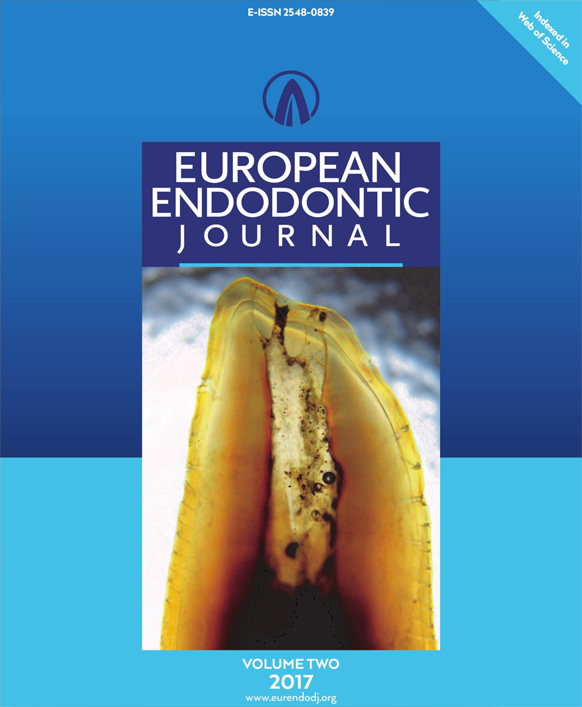
European Endodontic Journal
Yazarlar: Kazem Ashofteh Yazdi, Mohsen Aminsobhani, Parvin Alem
Konular:-
DOI:10.14744/eej.2018.13008
Anahtar Kelimeler: Bioactive materials,Calcium silicate,Filling quality,GuttaFlow2,Gutta-percha,Internal resorption,Obturation,Root filling techniques
Özet: This ex vivo study aims to investigate the root filling quality of warm vertical technique, single-cone technique with GuttaFlow2, Endoseal MTA and EndoSequence BC sealer as a sealer in artificial internal resorption cavity. Methods: For this study, 40 human single-root teeth were selected. After root preparation, the roots were horizontally sectioned 7 mm from the apex. The hemisphere cavities were created on both sides, and then they were re-approximated. According to filling methods and materials, the samples were randomly assigned to four experimental groups: I: warm vertical compaction technique (WVC), II: single-cone technique with GuttaFlow2 (GF), III: single-cone technique with Endoseal MTA sealer (EM), IV: single-cone technique with EndoSequence BC sealer (ES). Filled roots were radiographed in buccolingual and mesiodistal views to check the obturation, and stored in humid environment at the room temperature for 7 days. Each tooth was sectioned 7 mm from the root apex at the level of the previous cut, and it was then photographed under stereomicroscope. The photographs and radiographs of all samples were imported to an image-analysis software to calculate the percentage of sealer, gutta-percha, and voids. The results were statistically analyzed using one-way ANOVA and Kruskal–Wallis Dunn’s tests. Results: In buccolingual view of radiographs, the WVC and EM groups showed significantly lower percentage of voids (P value<0.05) compared to that in the GF group. In mesiodistal view, the WVC and EM groups showed significantly lower percentage of voids (P value<0.05) compared to that in the GF and ES groups. In stereomicroscope evaluation, the WVC and EM groups showed significantly lower percentage of voids (P value<0.05) compared to that in the GF and ES groups. The differences observed between the WVC and EM groups (P value>0.05) or between the GF and ES groups (P value>0.05) were not significant. Conclusion: WVC technique and single-cone technique with EM sealer are the optimum methods to fill artificial resorption cavities.